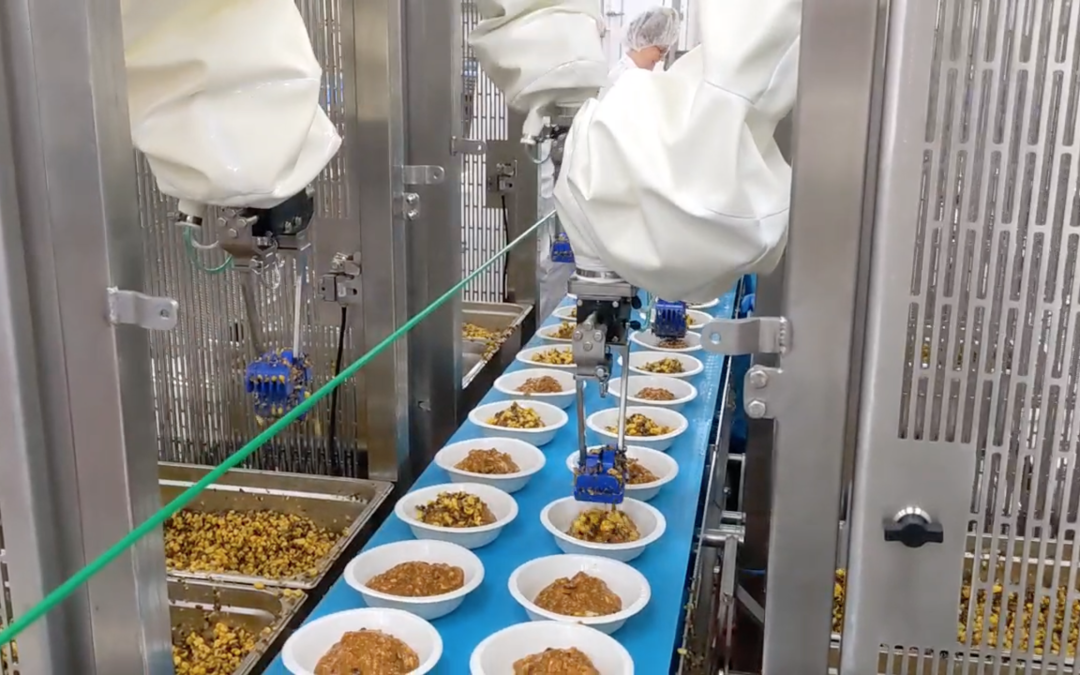The usual trajectory for a company is to start small before going big. Chef Robotics is doing the opposite.
Starting in 2022, it placed its AI-powered robots in high-volume, high-mix environments: large industrial kitchens that handle hundreds of SKUs in producing customized meals.
Big went well. Now it’s time for small: ghost kitchens.
“We’re ready for medium-volume, high-mix environments,” said Chef Robotics Founder Rajat Bhageria in an interview. “Ghost kitchens have a lot of different meals but they’re smaller than the food factories.”

Rajat Bhageria, CEO of Chef Robotics
Bhageria has been preparing for this pivot for a while.
“When we started we had two customers: Sunbasket, a meal kit company, and Amy’s Kitchen, which makes ready meals. The idea was to have robots work together with humans. But with that came a lot of randomness. The human might rotate a tray, or put a tray farther than the robot thinks it will be, which would add noise to the situation. We needed to build software to adapt to that. That was what 2022 was like,” he said.
The company’s robots can handle complexity, with arms that can handle utensils trained to dispense portions of food into trays through rapid machine learning. Bhageria refers to it as a Robotics as a Service (RaaS) model.
“What you need is training data, and the only way to get training data is production,” he said. “That’s why we started with food manufacturing instead of restaurants, as 60 to 70 percent of labor is in assembly. If we went to Sweetgreen, they would have said, look, to deploy something, you need to do 100 things. If you cannot do every single ingredient, you haven’t saved one person for me. In manufacturing, one person is doing five ingredients, one ingredient at a time, with five changeovers. So we bootstrapped a data set for five ingredients. We shipped one robot into the field. We collected production data. We saw how different ingredients did. That resulted in a better RaaS model, which made our customers happier. And if customers are happy, they buy more robots.”
The process has resulted in more business from its existing customers and has helped it grow its roster. Today the company has robots in six cities. It has made 30 million servings using more than 1,700 ingredients.
Bhageria feels confident that ghost kitchens will be an apples-to-apples fit.
Picking Up a Blueberry and Not Crushing It
“The lesson I learned in start-ups is the focus is the key,” he said. “We started by learning how to pick up a blueberry and not crush it. We got really good at it. If we can do that in manufacturing, the same skill set can be used in a ghost kitchen.”
After it integrates into ghost kitchens, Bhageria plans to approach restaurant brands, which he defines as high-mix, low-volume operators. He understands their need.
“Restaurants have 1.1 million jobs unfilled. In other industries they off-shore jobs. You can’t do with that with food. Automation can be a big help,” he said.
He’s given restaurants a great deal of thought.
“Unless your robot can do every task in a restaurant, from assembly, which only lasts three or four hours a day, during the lunch and dinner rushes, to cooking to cleaning, it’s hard to have an ROI based on human labor, as the makeline only lasts so long,” he said. “Your technology has to be very mature to make your case.”
If he continues to iterate his robots — “we believe the winners in this space are going to be the ones with the most production training data” — they may just earn their place in the back of house.
Of course Chef Robotics does have competition, including Miso Robotics and Hyphen. But Bhageria likes his positioning.
“Food has historically been an industry without too much innovation. It’s not like the auto industry. But AI will change everything.”


